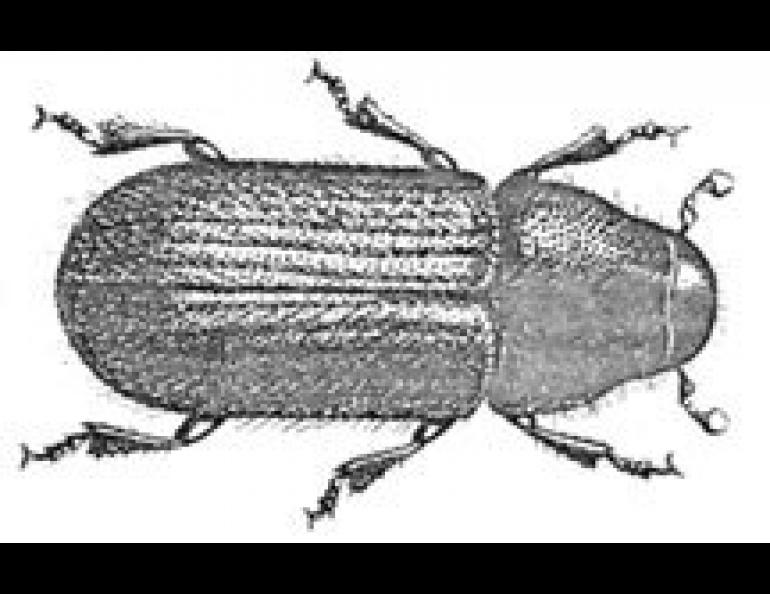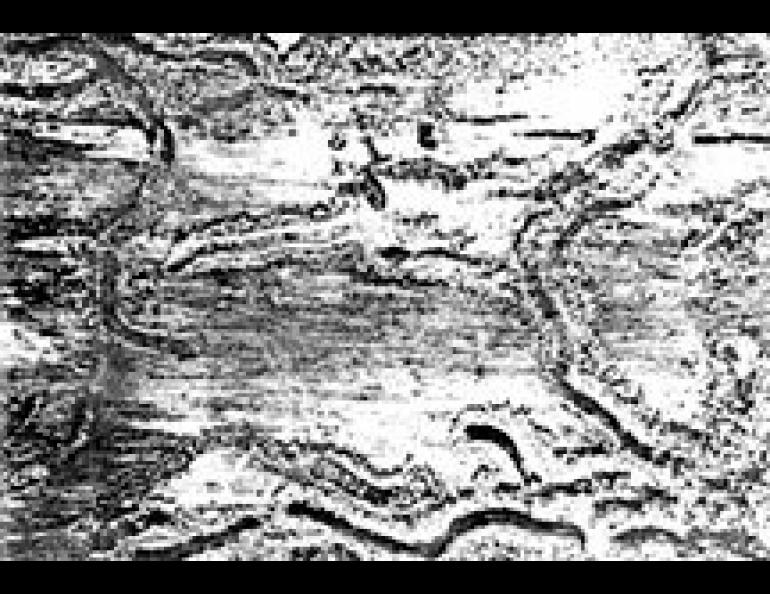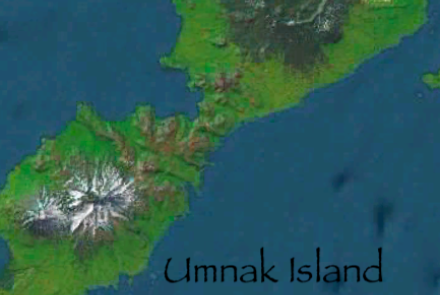

Bark Beetles in Spruce Trees
Bark beetles attack spruce trees in early summer. These brownish black beetles are common throughout Alaska and Yukon Territory where they kill trees by boring through the bark and feeding and breeding in the phloem (inner bark)--the thin layer of soft tissue directly beneath the bark. If the beetles girdle the phloem, the tree will die since the phloem is the vital path that transports food manufactured in the needles down to the roots.
The primary indication that beetles are attacking a tree is reddish brown dust which accumulates on the bark, in bark crevices, and on the ground beneath the attacked tree. Globules of resin or pitch tubes at the beetles' entrance hole into the bark are another sign of beetle attack. Entrance holes are found from the base of the trunk upward to the top and even in the branches. Different species of bark beetles, of which there are about 20 in Alaska, attack the tree at different heights. To determine if beetles are present, remove the bark around an entrance hole to locate the adult beetle and larval tunnels. Changes in foliage coloration, from one month to one year later, are another indication of attack.
Beetles sometimes attack healthy, vigorous trees and are usually trapped in a mass of resin and "pitched out" of the entrance hole. Trees that have been attacked in this manner will have patches of resin flowing down the trunk.
Various activities which disturb the environment of spruce contribute to bark beetle attack. These activities include timber harvest, land clearing, and severe winds which cause wind-thrown trees. Bark beetle attacks on trees in urban and suburban areas are encouraged by stress on the trees caused by mechanical damage during building construction, excessive removal or addition of soil from or on the area over the tree roots, soil compaction around the base of trees, and sewage drainage fields adjacent to tree roots.
The best method for preventing the spread of beetles from infested trees to live, healthy trees is to fell, cut up, and burn the entire tree at the first sign of beetle attack. Preventive sprays can be applied to surrounding live trees to protect them from attack in the critical period of beetle flight, May to July.





